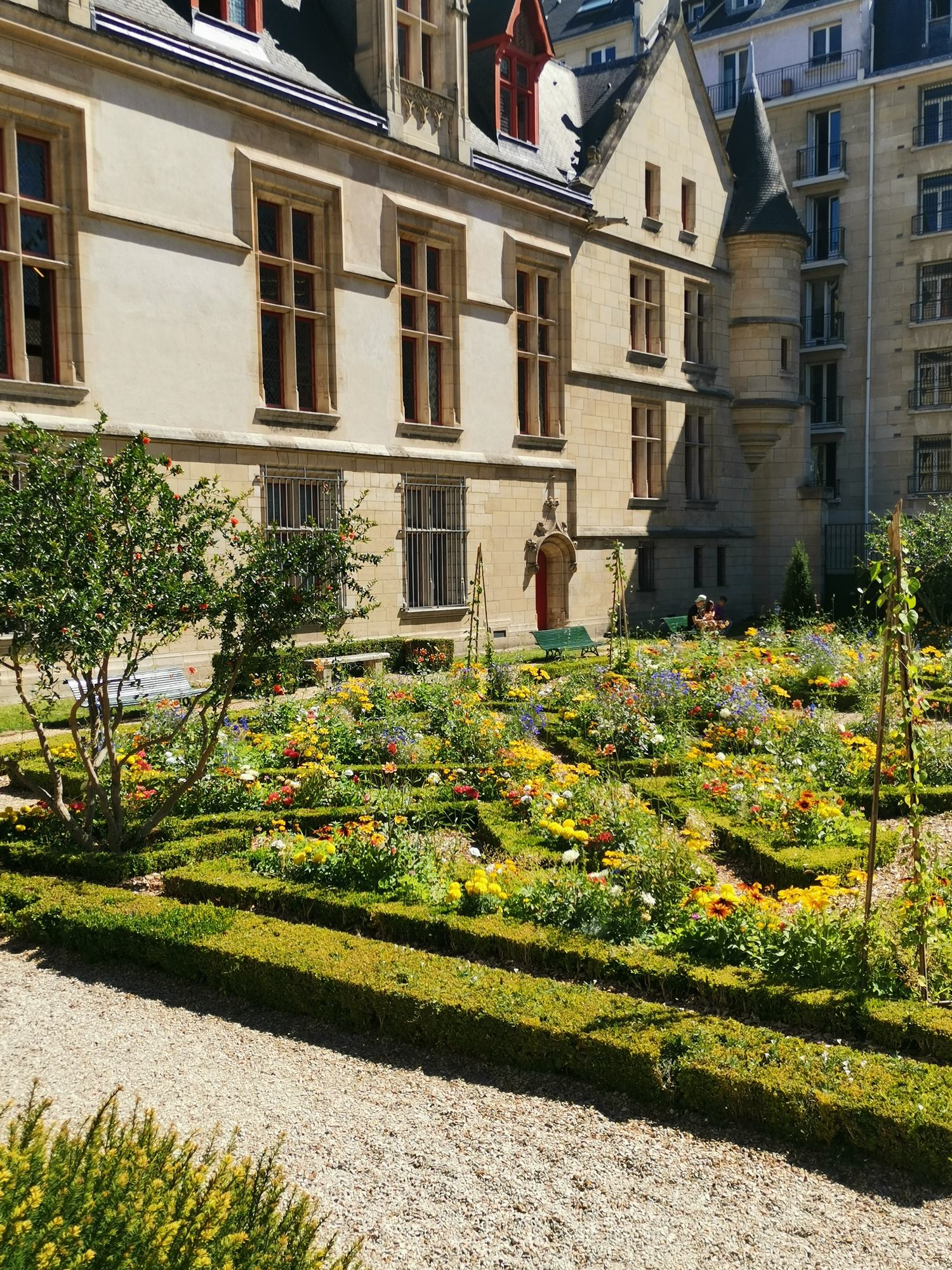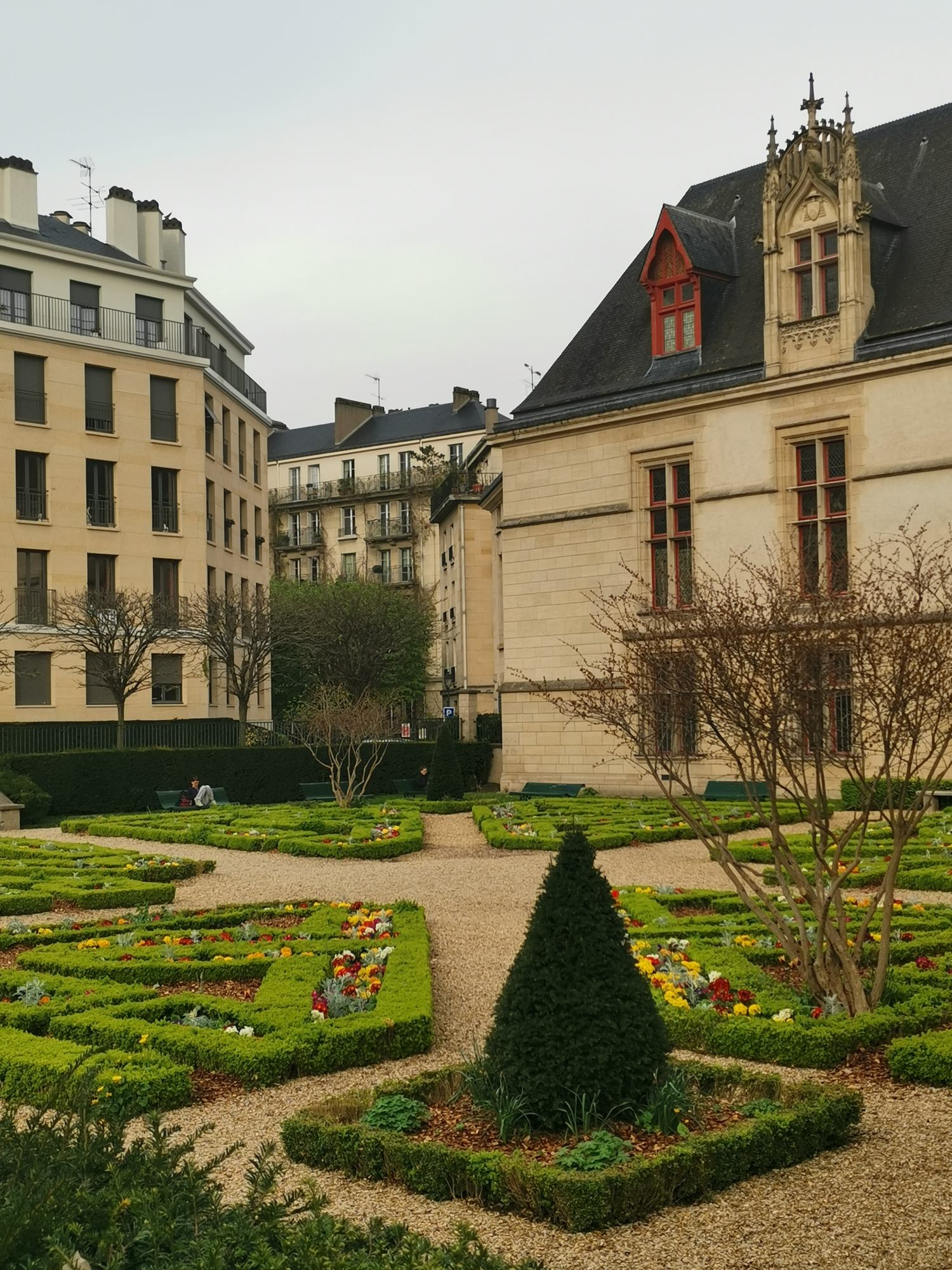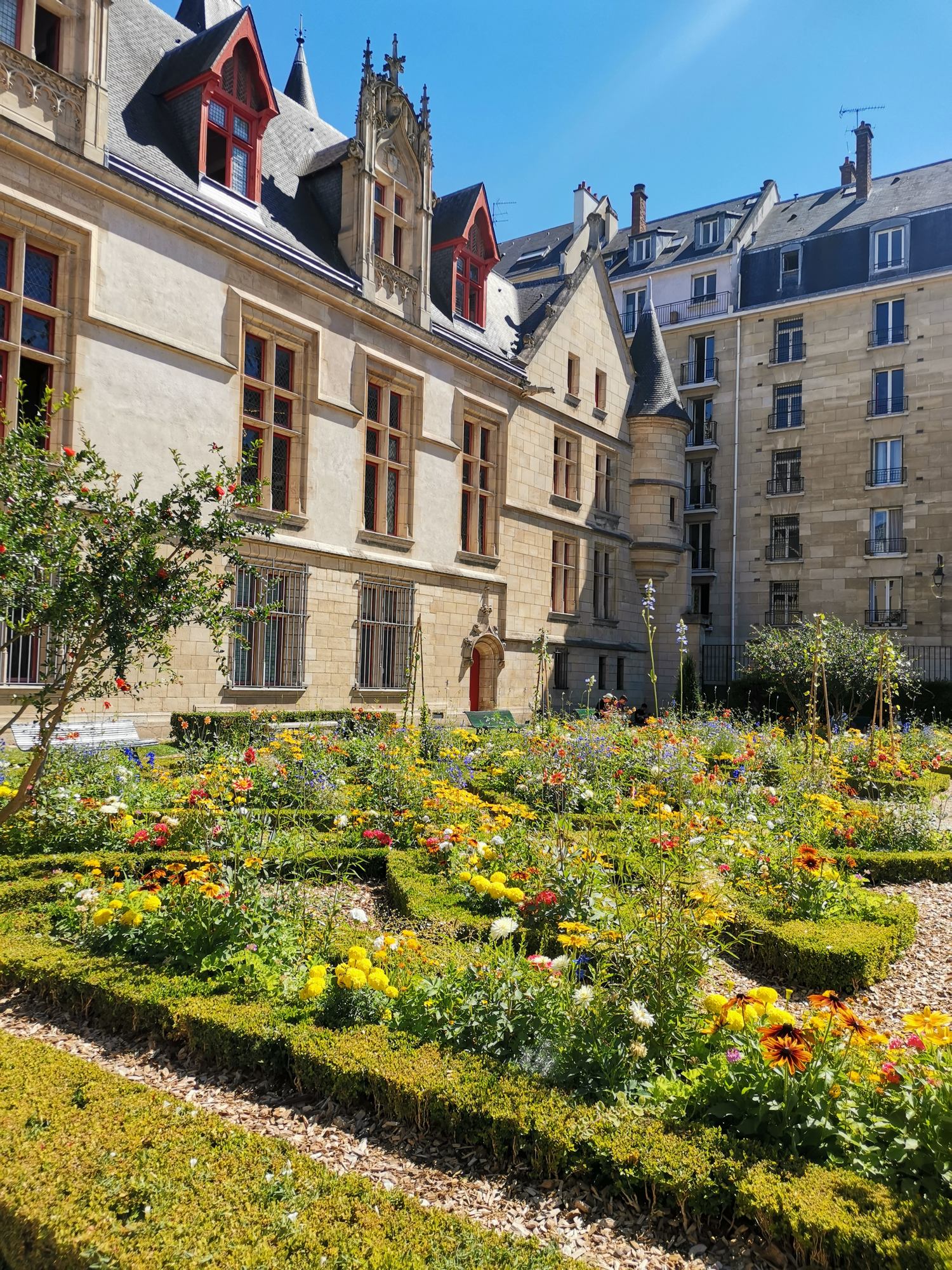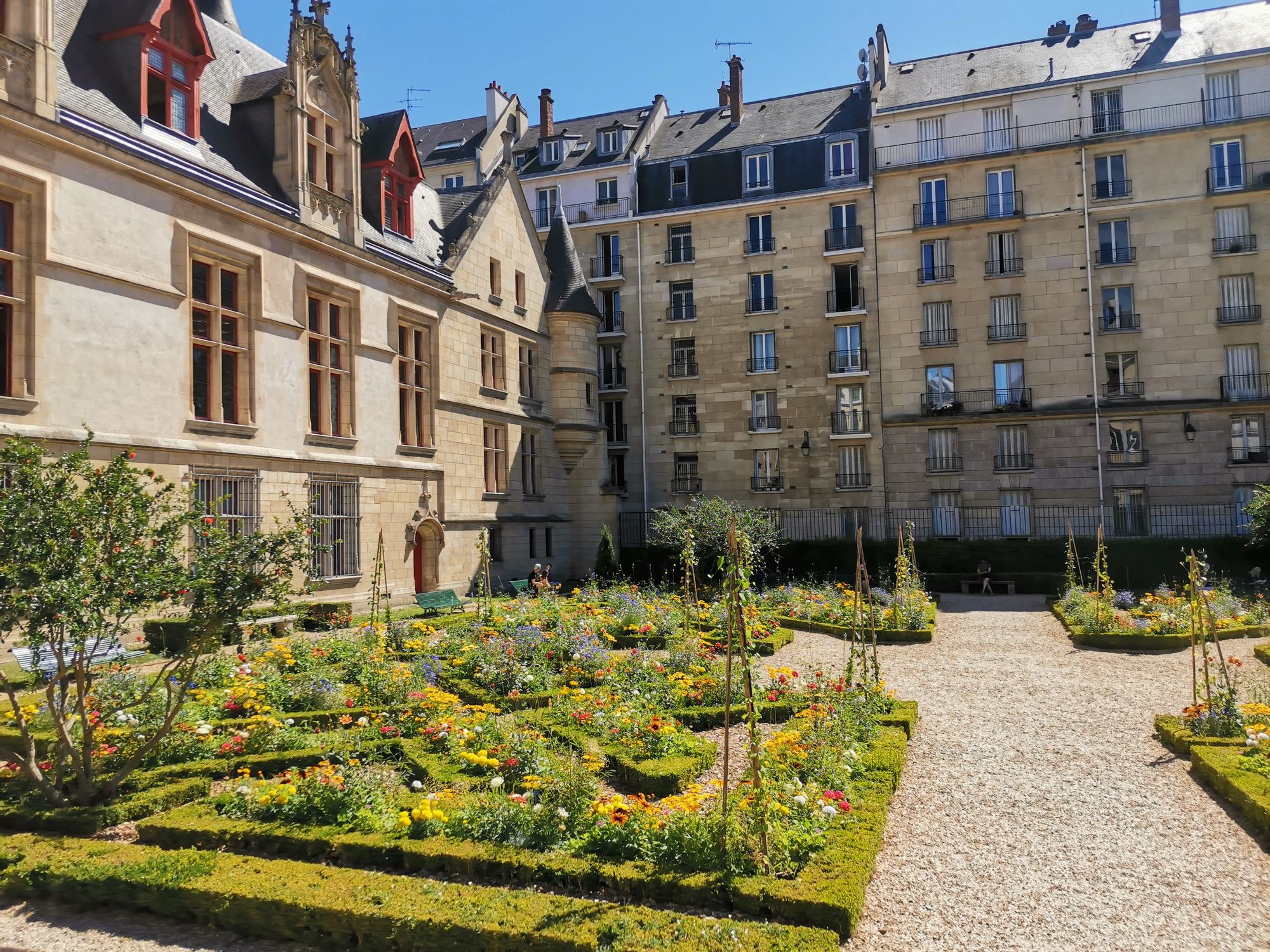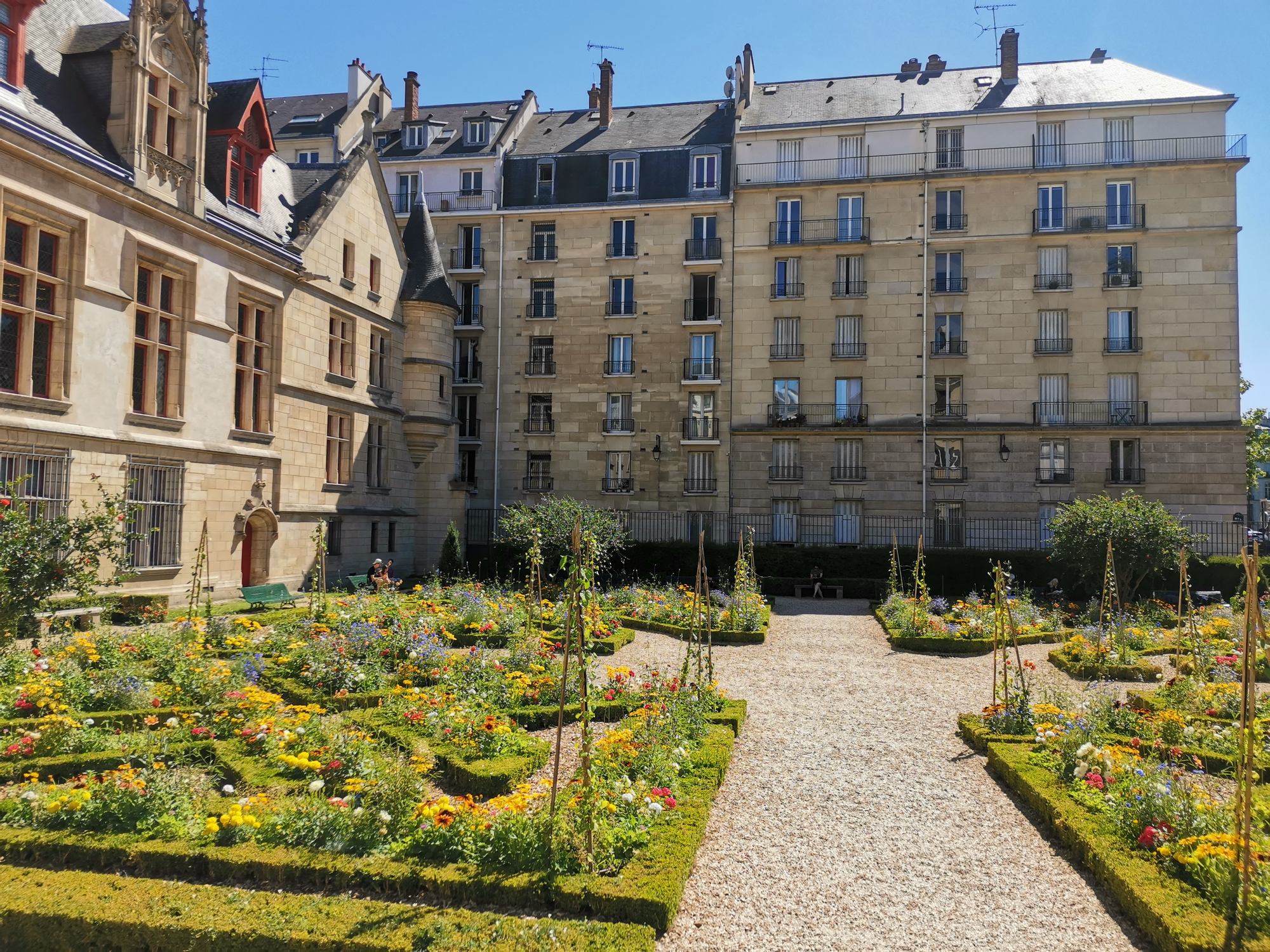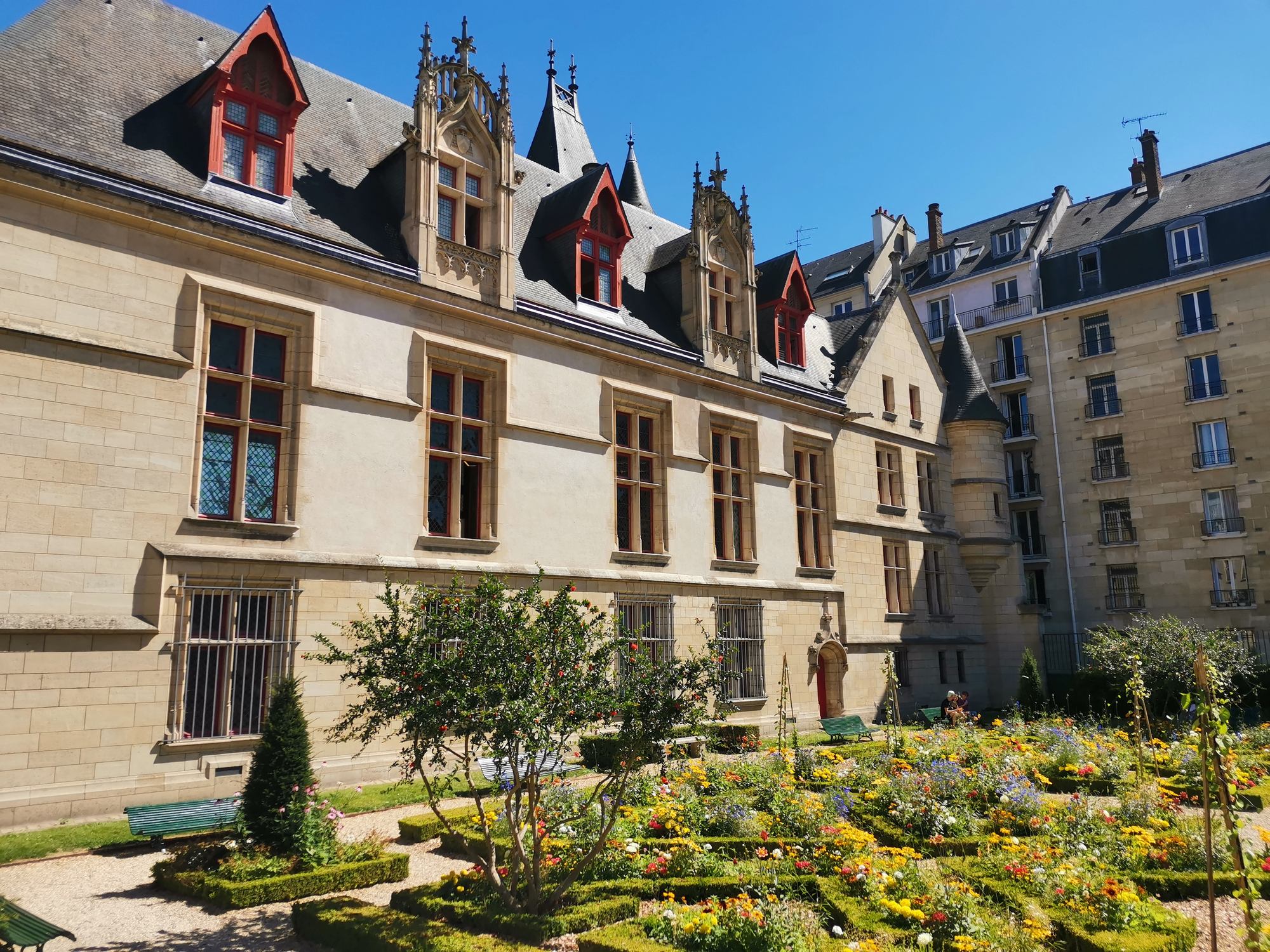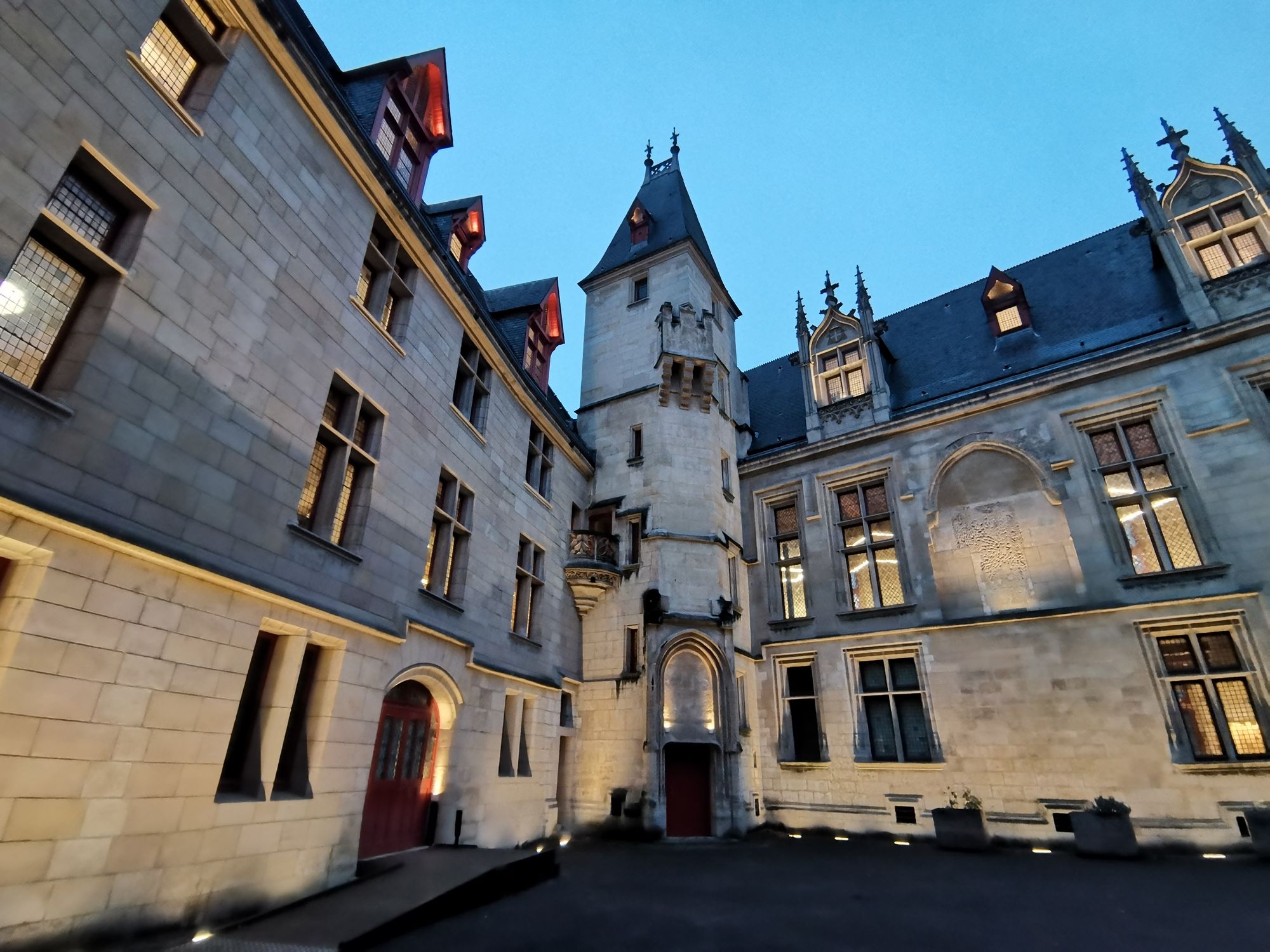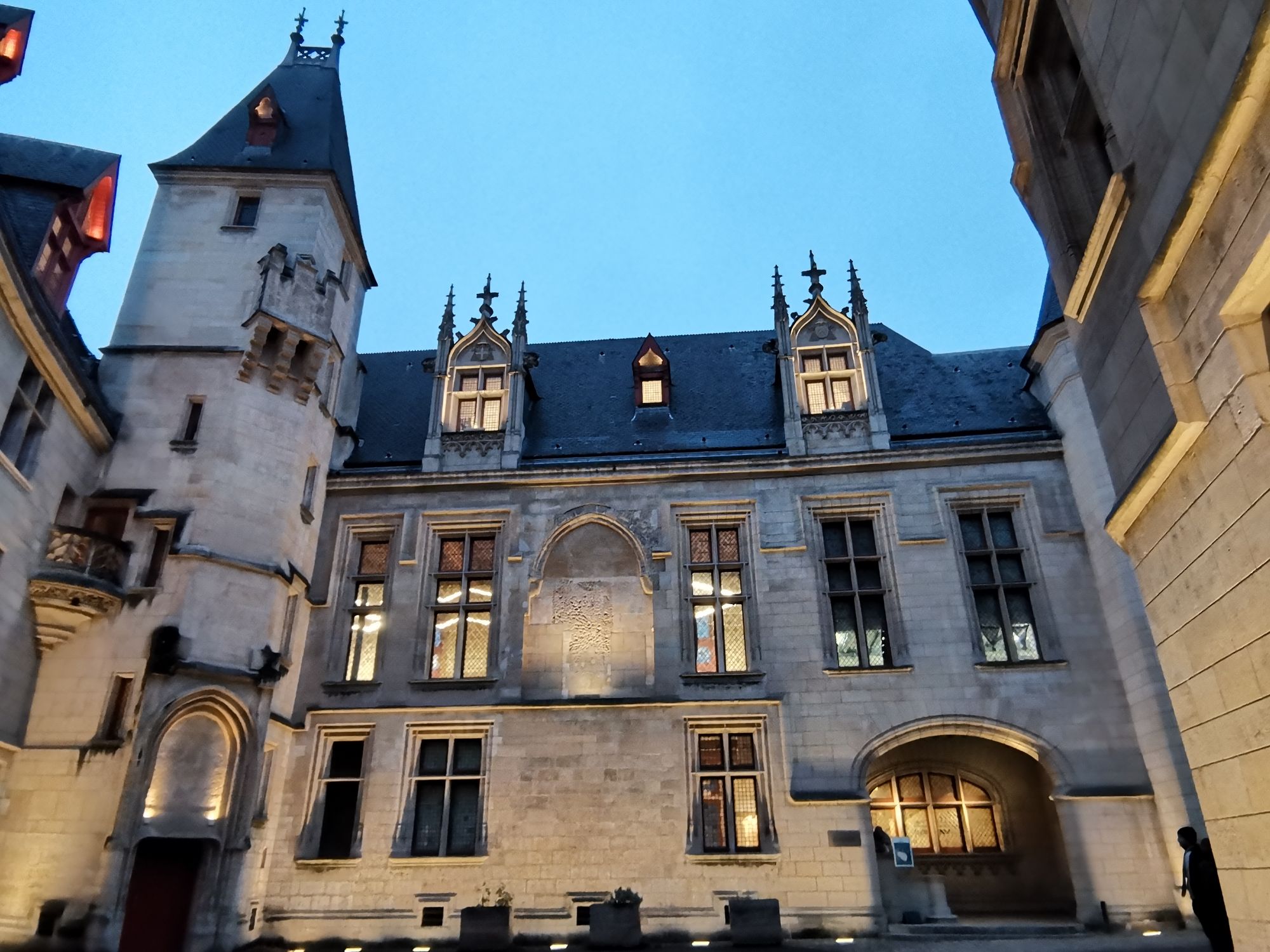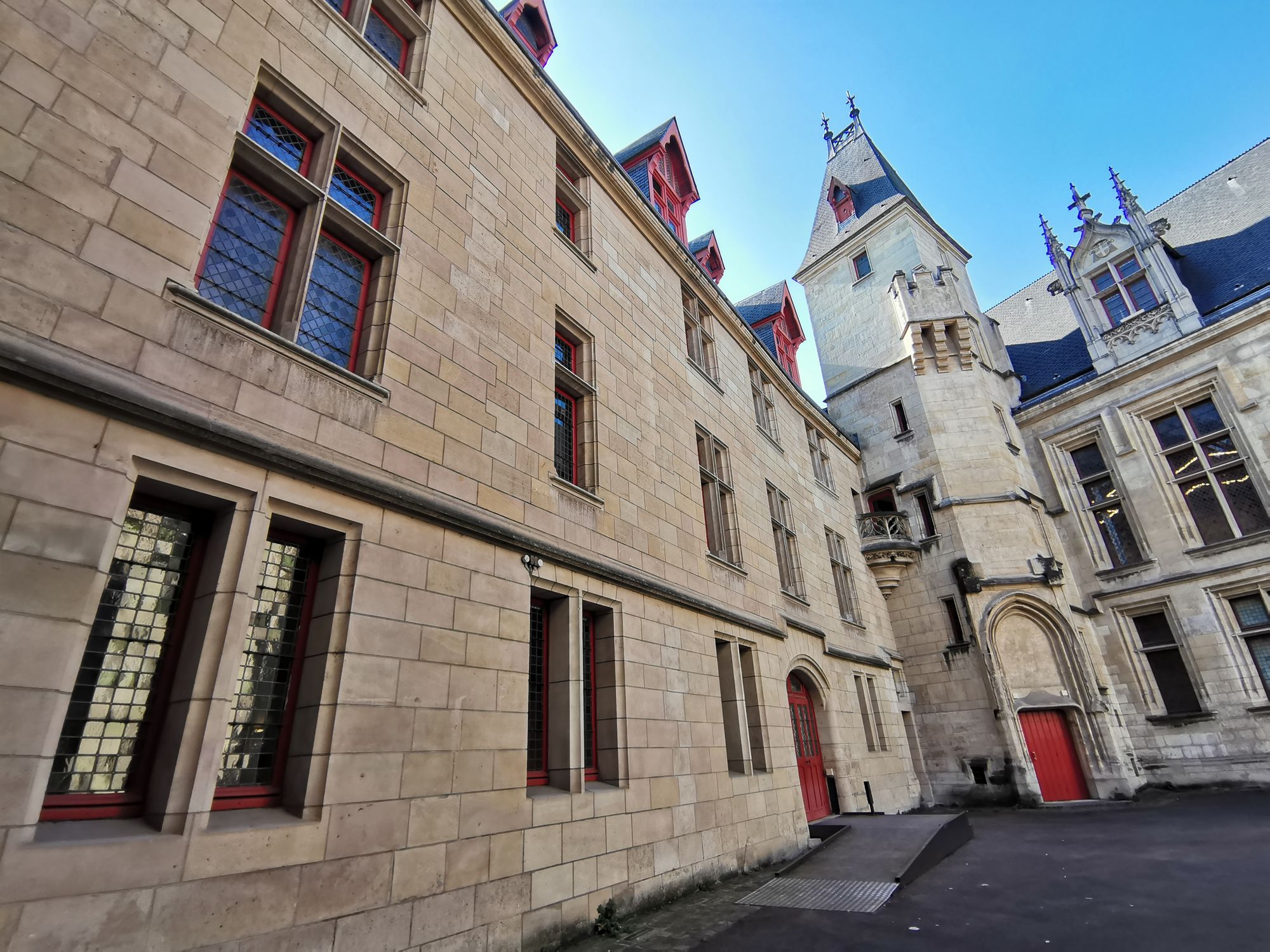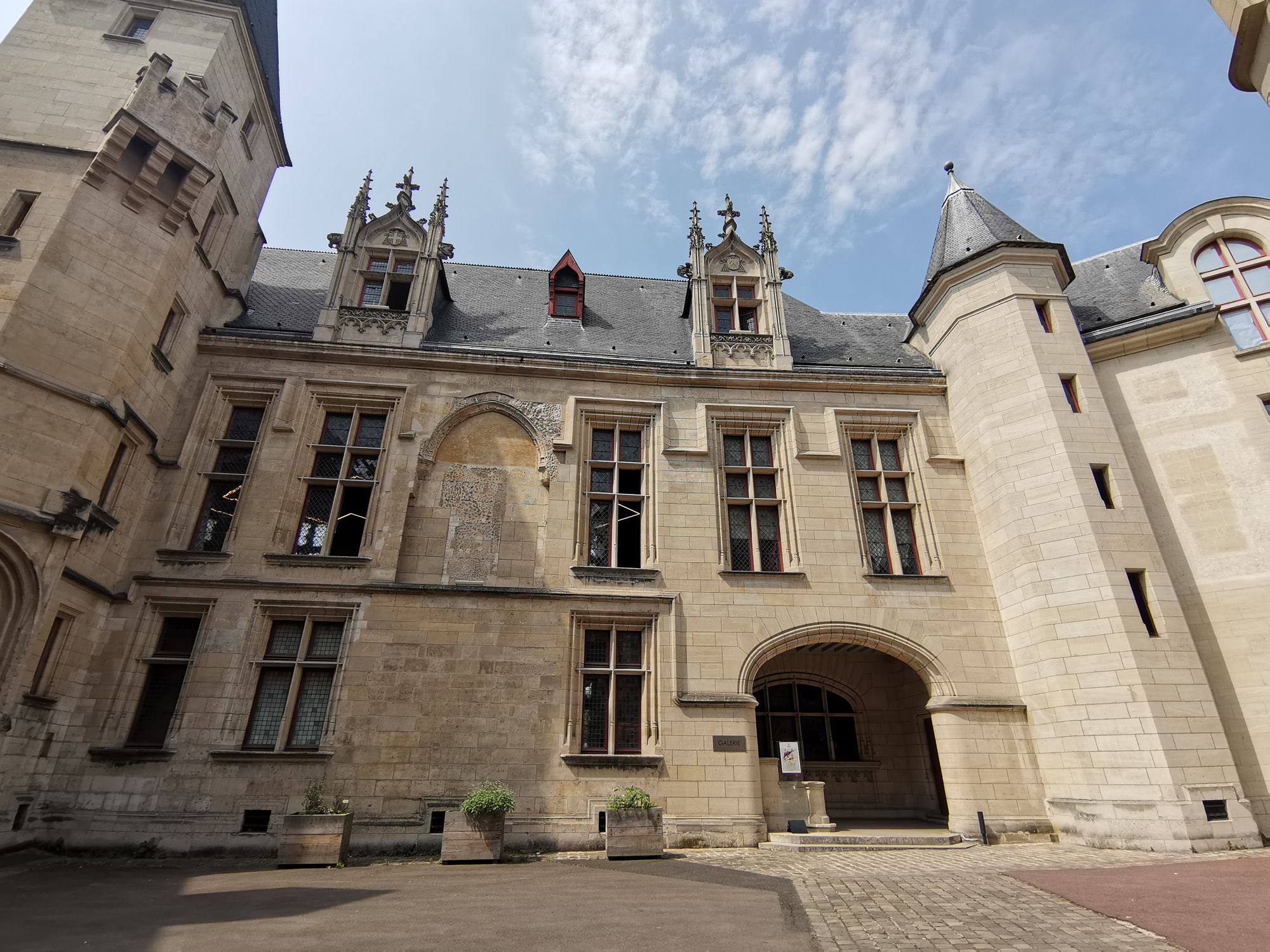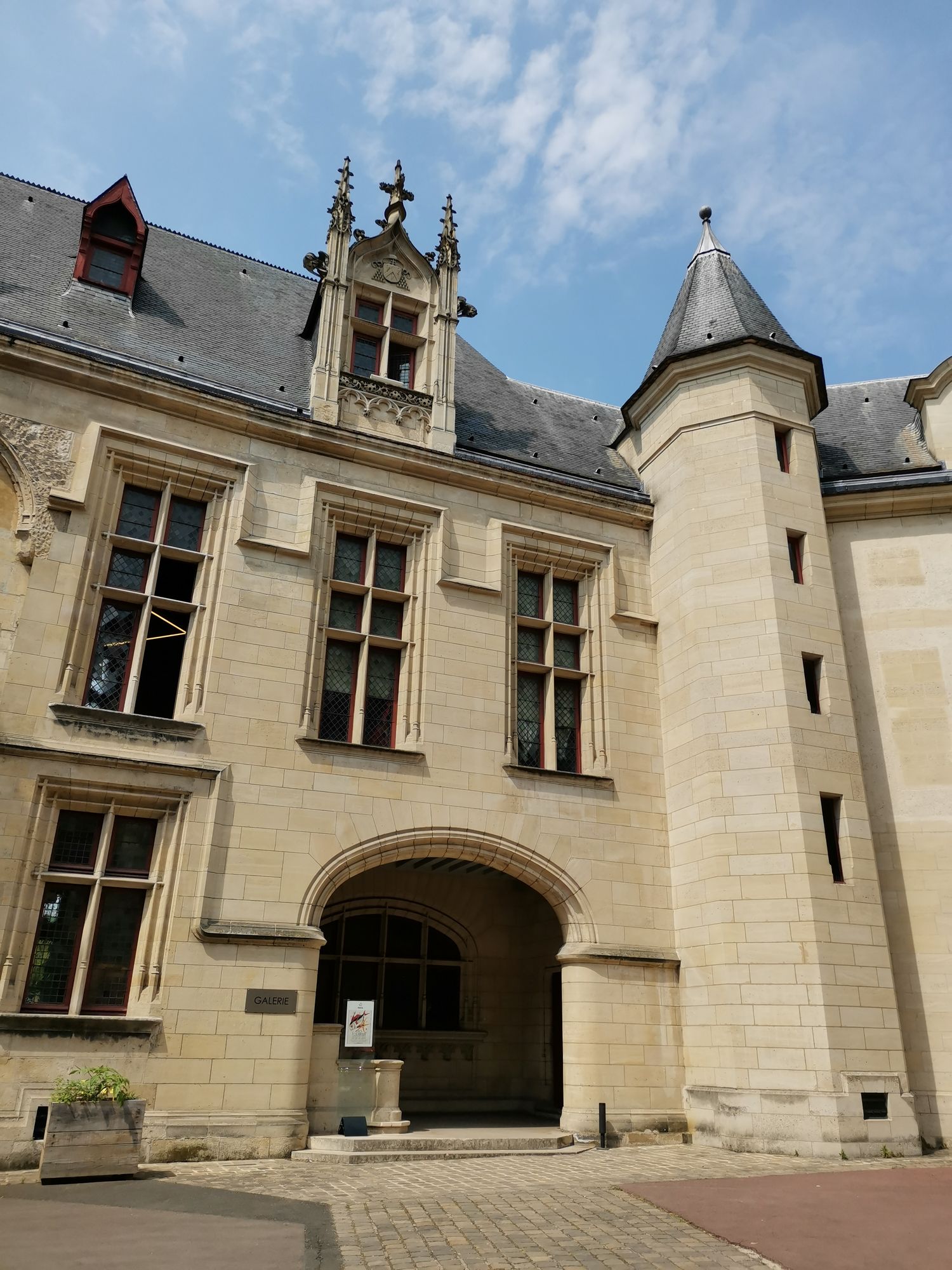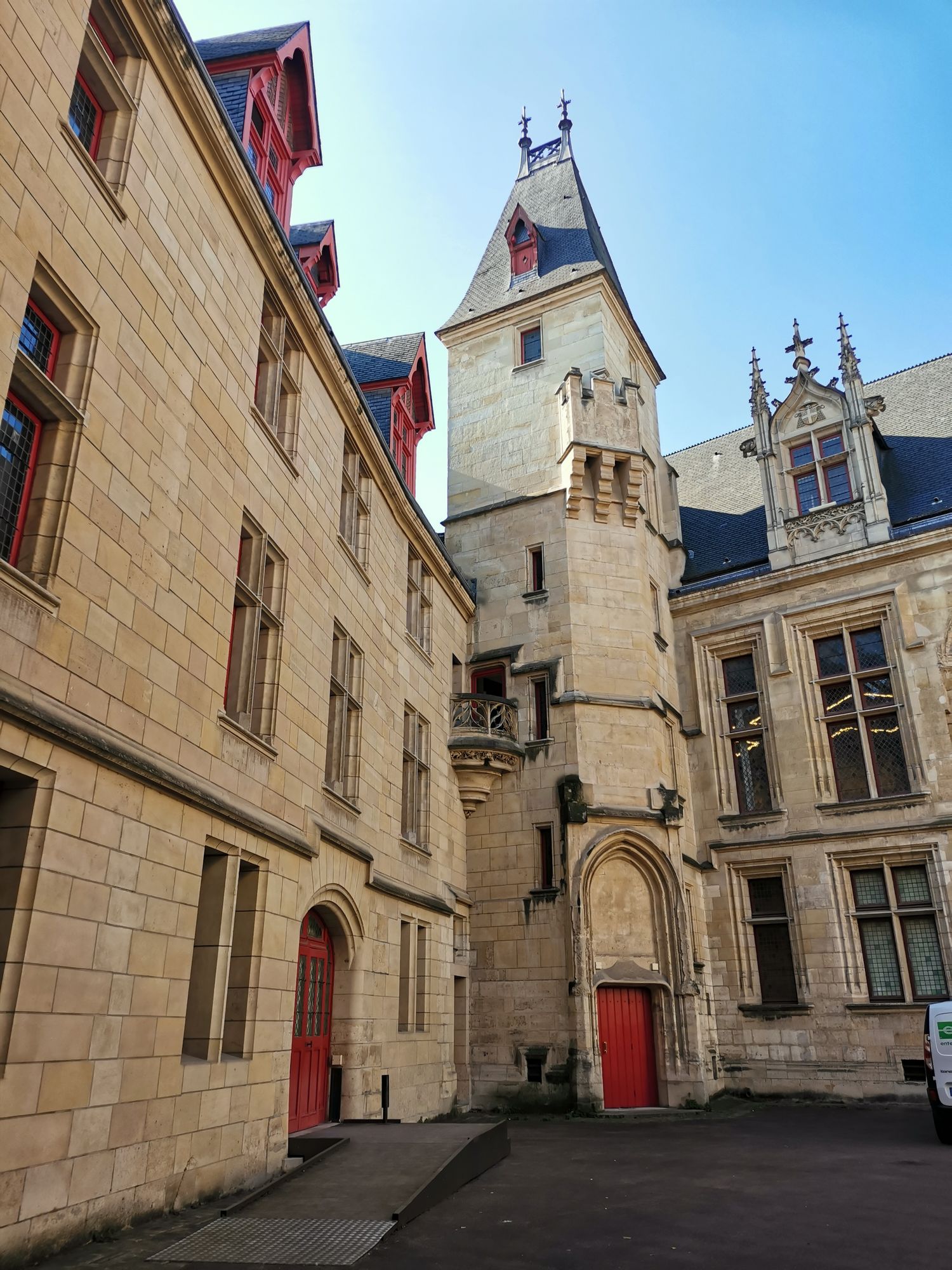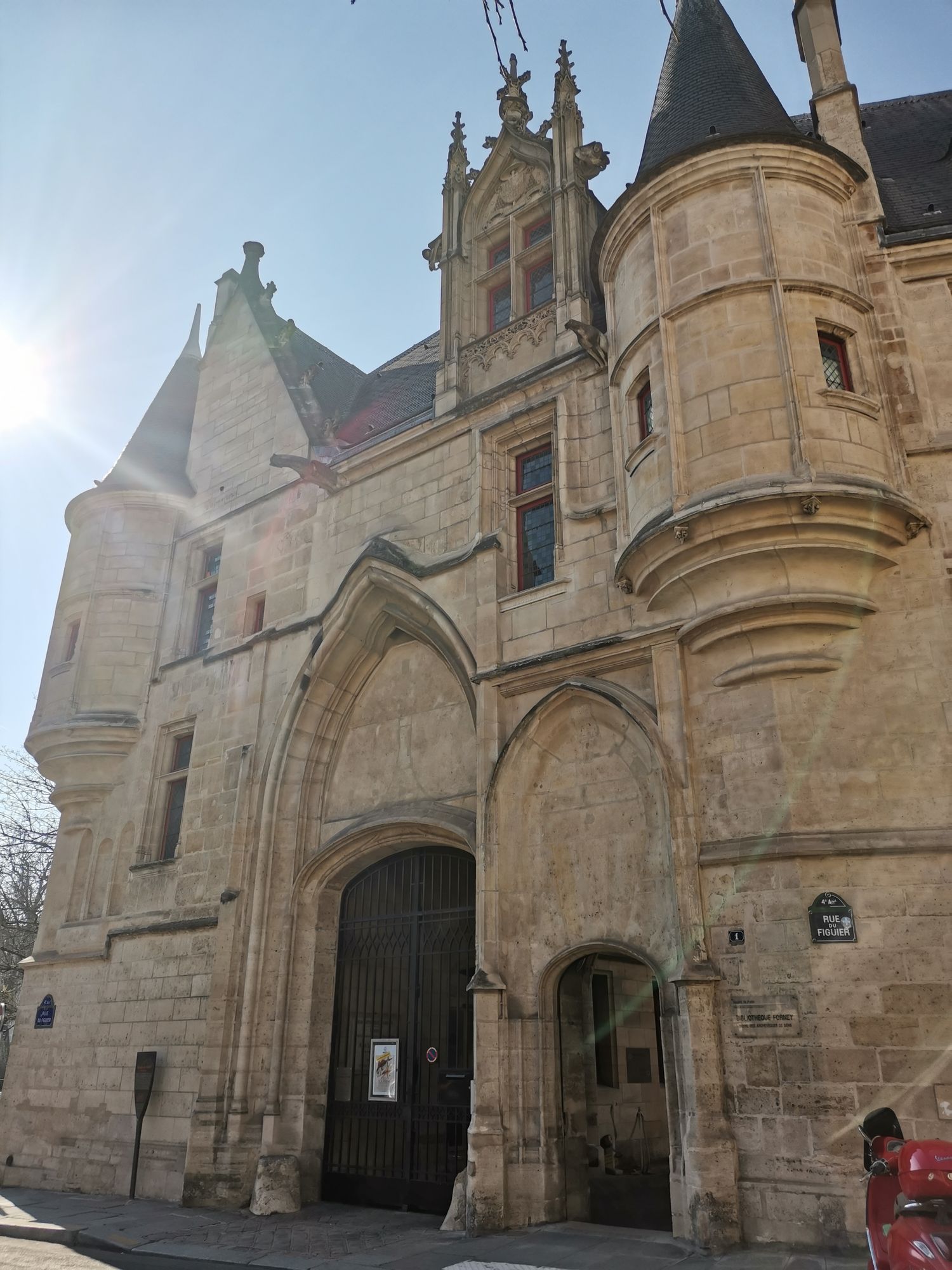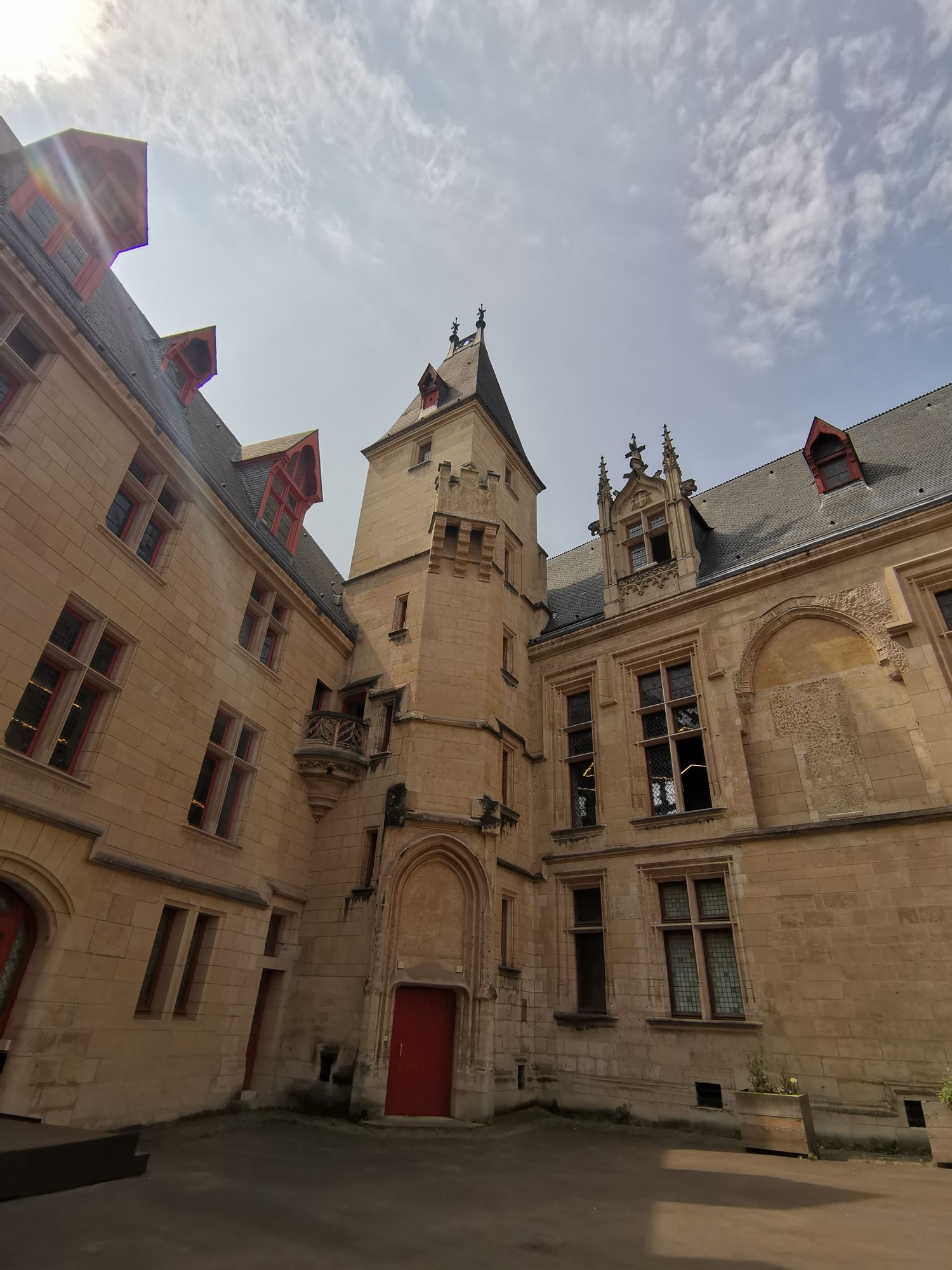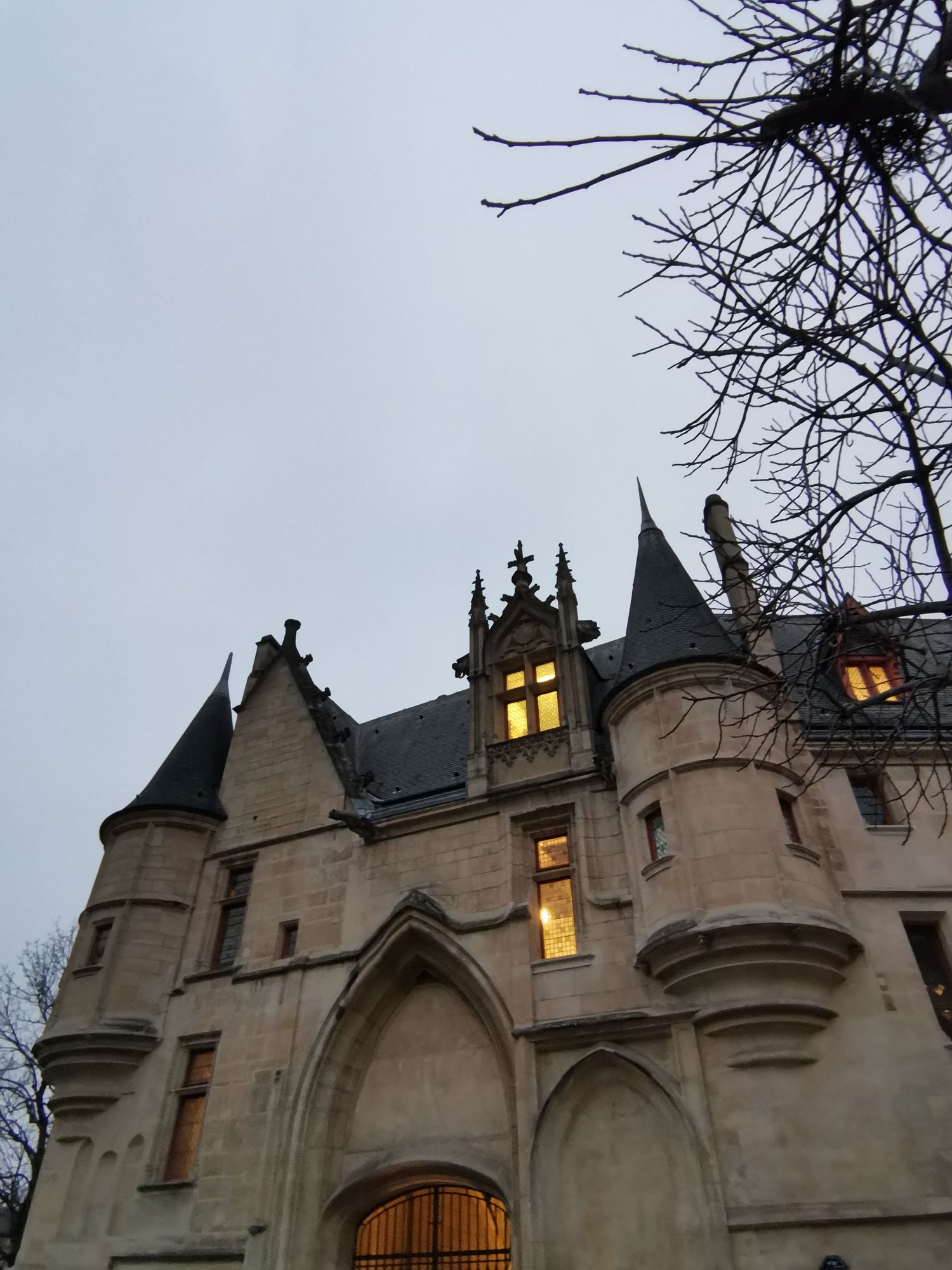Hôtel de Sens: Witness to Parisian History
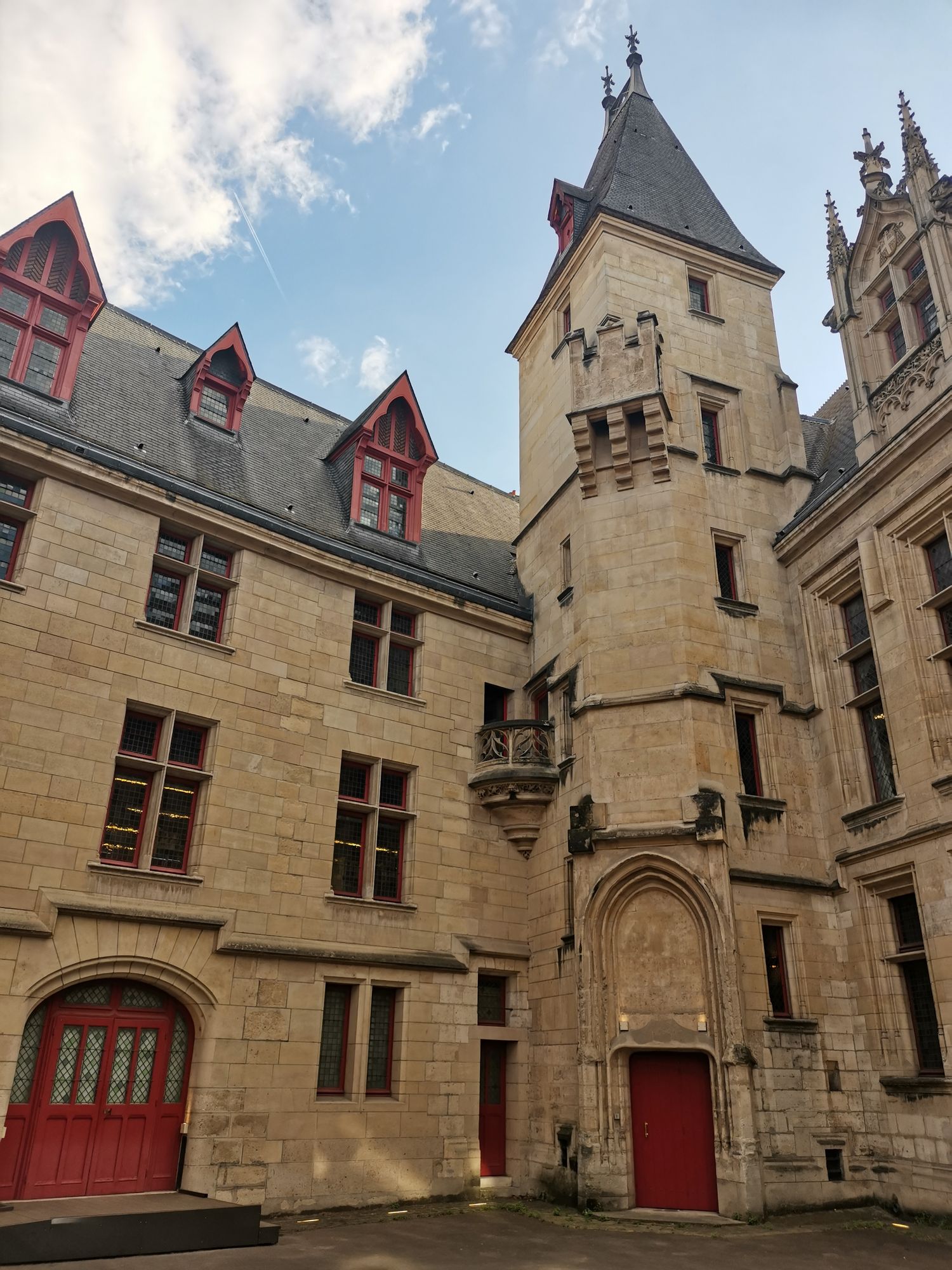 The archbishop of Sens had the bishopric of Paris in his district of Quatrième Lyonnaise and a residence in this city since 1292.
The archbishop of Sens had the bishopric of Paris in his district of Quatrième Lyonnaise and a residence in this city since 1292.Tristan de Salazar became the 9th archbishop of Sens in 1475, and rebuilt the most beautiful Parisian palace of the period in the flamboyant style. Paris became an archdiocese in 1622, and the archbishops of Sens stopped using the hotel and rented it out.
From 1689 to 1743, it became the headquarters of the “messageries, coches et carrosses de Lyon Bourgogne et Franche-Comté”. This was followed by other carriage companies, a canning factory, a jam factory, a glass factory, etc.
The City of Paris bought the Hôtel de Sens in 1911, and restored it to house the Bibliothèque Forney, dedicated mainly to posters and advertising.
The Hôtel de Sens was classified as a historic monument in 1912.
A hotel at the heart of medieval history
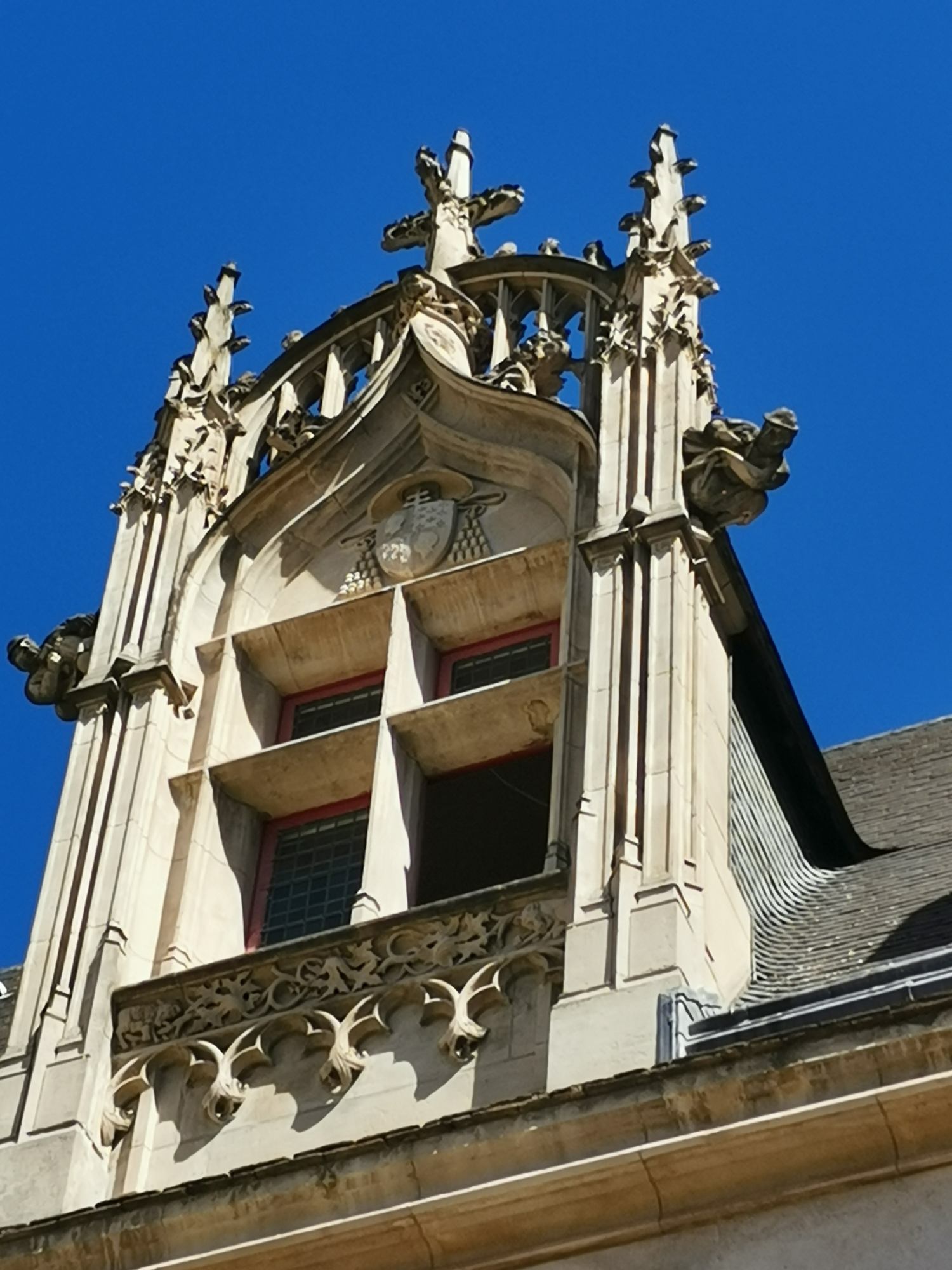 The history of the Hôtel de Sens is closely linked to the evolution of Paris through the ages. Before 1622, when Paris became an archbishopric, the city was under the jurisdiction of the archbishopric of Sens. Guillaume de Melun, archbishop of Sens and personal adviser to the kings of France, had acquired the hotel in 1345, making it his personal residence.
The history of the Hôtel de Sens is closely linked to the evolution of Paris through the ages. Before 1622, when Paris became an archbishopric, the city was under the jurisdiction of the archbishopric of Sens. Guillaume de Melun, archbishop of Sens and personal adviser to the kings of France, had acquired the hotel in 1345, making it his personal residence.In the 14th century, Charles V was looking for a safe place to reside, away from the hustle and bustle of the Cité and Philippe Auguste's ramparts. He acquired four residences in the Marais district, including that of the Archbishop of Sens, to create his grand royal residence, the Hôtel Saint-Pol.
However, the most significant transformation of the Hôtel de Sens was undertaken by Tristan de Salazar, Archbishop of Sens from 1474 to 1519. Between 1495 and 1519, he oversaw the construction of a new mansion, marking the present building. This sumptuous residence is reminiscent of a medieval castle, with its corner turrets, imposing keep, elegant Gothic porch and tall windows adorned with coats of arms. When Tristan de Salazar died in 1519, construction had barely been completed.
Illustrious guests through the ages
Over the centuries, the Hôtel de Sens has been home to many notable personalities, including Antoine Du Prat, chancellor and prime minister under François I, and Marguerite de Valois, whose marriage to Henri IV was declared null and void in 1599.
The famous Nostradamus, invited to Paris by Queen Catherine de Médicis in 1555, also stayed at the Hôtel de Sens, where he is said to have lived so pleasantly that he suffered a major attack of gout.
Over the years, the Hôtel de Sens has witnessed many events and welcomed guests of renown, leaving an indelible mark on its history.
Transformation and Renaissance
However, after the bishopric of Paris became an archbishopric in 1622, the archbishops of Sens gradually ceased to reside in the capital. The Hôtel de Sens was then leased to various private individuals and industrialists.
Over the centuries, the Hôtel de Sens underwent various transformations, serving in turn as a rolling mill, a laundry, a canned food factory, a hare-hair cutter, an optician, a confectionery, and finally as a depot for the Haroux glassworks. These businesses coexisted with rather modest dwellings.
Rescue and Modern Renaissance
The Hôtel de Sens narrowly escaped irreparable deterioration. In 1911, the City of Paris acquired the building, which was in an advanced state of disrepair, for use as a labor court. In 1929, the Bibliothèque Forney moved in, opening a new chapter in its history.
Restoration work was spread over several decades, from the 1930s to the 1950s. During this period, many tenants were evacuated, and part of the neighboring building was demolished. The Hôtel de Sens was thus restored and transformed into a valuable cultural space.
The Forney Library
The Bibliothèque Forney, dedicated to the fine arts, crafts, applied arts and decorative arts, moved into the Hôtel de Sens in 1961. It has become a reference point for research in these fields, housing a vast treasure trove of documents and works relating to the visual arts and advertising.
The Hôtel de Sens is therefore much more than just a historical building, it's a place where history, culture and knowledge meet, perpetuating the tradition of this site in the heart of Paris for over five centuries.
Discover also the superb garden of the Hôtel de Sens
Photos of the Hôtel de Sens
Back to the Summary of the private mansions of the Marais
